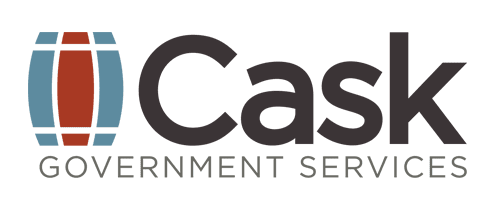Since my last blog post on Economic Benefits Analysis, I immersed myself in the principles of Technology Business Management (TBM) as a means for CIOs and IT Managers to better show how they produce value for their organizations. TBM helps IT professionals distinguish themselves as strategic partners in driving business strategies, and makes them enablers of “Business Growth” and “Business Transformation” rather than just another cost center or commodity needed for only “Running the Business”. In fact, all the work I have done up to now for my clients in evaluating the benefits and costs of investing in Major Automated Information Systems (MAIS) has, in an oblique sort of way, been an attempt to show IT Business Value. Now that I understand this, I have determined that in some ways I have failed my clients by not showing them how to use this Value-of-IT information in conversations with executive management, Business Unit (BU) owners, and service vendors. Even though I met the specifics for contract delivery, I could have helped my clients to exploit their now documented value and cost transparency by positioning them as business and strategy decision makers. From here on out, I will be approaching my IT Economic Benefits and IT Business Case Analysis work from a TBM point of view.
What does that mean? Well, for starters, I realized that if CIOs and IT Managers across all industries wanted bright futures, they would need to increase their ability to show value by aligning their departments to support evolving business goals. Also, they would need to develop as leaders – not just by acquiring social and corporate cultural skills, but rather by having fact-based discussions with executive management about the value they provide to achieving business goals, the actual (not perceived) cost of current services, the identification of in-house IT service consumers, the true cost of their IT vendor relationships, and performance relative to growing and transforming the business. Having credible facts will enable IT executives and managers to run IT as a business. Collecting these new facts will require new metrics that go beyond the traditional IT performance metrics, such as “cost per gig of storage” and “number of transactions per hour”. At this intersection of Economic Benefits Analysis and TBM is where I will start my transformation from an analyst that does a drive-by with the results, into a TBM Consultant who guides the CIO or IT client on having meaningful discussions with internal BU owners and C-suite dwellers by creating transparency into IT costs and the articulation of IT benefits to show solid Return on Investment (ROI). This blog series started out with Part One discussing Capabilities Based Benefits Analysis and the difference between Cost Analysis and Economic Benefits Analysis. Part Two demonstrated that the decision to invest in new IT capabilities requires an up-front commitment of resources that are used to build system and operational capabilities. Analysis of the appropriate metrics and KPIs reveals operational efficiencies which are the result of building new capabilities, and are expressed as benefits – in terms of money and added value to the organization. A summation of all the benefits of new capabilities profoundly demonstrates the projects financial and increased-value-to-the-business ROI to executive management and relevant stakeholders. Below is a simple analysis of one new capability (of many) showing a Yearly Benefit, which is only one input to the project’s overall ROI calculation. The tool for organizing capabilities, benefits and therefore value is the Performance Improvement Metrics Table (PIMT). Showing value from implementation of a new IT project, or continued maintenance of a business system opens the door for IT professionals to initiate conversations about how IT aligns to, and supports business goals.  In this simple example the IT project involves building capability around the functional areas of Request Management, Supply, and Maintenance. The specific targeted improvement is Inventory Reduction. The system is to provide dynamic transparency into inventory metrics which are influenced by inventory carrying requirements, order timing, and costs. Managing these elements should enable logisticians to reduce inventories and produce real cost savings. IT managers can start showing how they provide value by examining current business rules as they are applied to systems they support. In this example the legacy system uses a business rule that actually promotes the inflation of inventory levels. An IT investment to upgrade the current platform will provide new capabilities that include a supply chain planning engine that will actually enable the reduction of inventories. This performance improvement is expected to deliver a one-time inventory drawdown of 15% – 25% of the total inventory cost, and a recurring annual inventory carrying cost benefit of 20% of total inventory cost. This is significant – especially for inventory carrying costs. The implication is that any item that you don’t have visibility over, and stays in the warehouse for 5 years has effectively been repurchased. There are many cases in manufacturing, retailing, and government where items have been off the books for years – racking up costs. Transparency and visibility matters… When this example benefit is annualized in terms of money, IT managers can open the dialog with executive management about how IT enabled the projected drawdown of $500M worth of inventory over three years, and an annualized Carrying Cost Avoidance of $100M per year. By writing these savings off against the investment over the expected life of the project or installation, IT can bring the conversation back to discussing IT as a strategic partner and BU enabler by showing positive ROIs as opposed to discussions about how IT is a commoditized cost center. In this series, my goal was to show how one can derive economic benefits from investments in Capabilities that produce Operational Efficiencies which Generate Cost Savings or Increased Value. For more ideas on cost analysis topics and TBM please visit our website.
In this simple example the IT project involves building capability around the functional areas of Request Management, Supply, and Maintenance. The specific targeted improvement is Inventory Reduction. The system is to provide dynamic transparency into inventory metrics which are influenced by inventory carrying requirements, order timing, and costs. Managing these elements should enable logisticians to reduce inventories and produce real cost savings. IT managers can start showing how they provide value by examining current business rules as they are applied to systems they support. In this example the legacy system uses a business rule that actually promotes the inflation of inventory levels. An IT investment to upgrade the current platform will provide new capabilities that include a supply chain planning engine that will actually enable the reduction of inventories. This performance improvement is expected to deliver a one-time inventory drawdown of 15% – 25% of the total inventory cost, and a recurring annual inventory carrying cost benefit of 20% of total inventory cost. This is significant – especially for inventory carrying costs. The implication is that any item that you don’t have visibility over, and stays in the warehouse for 5 years has effectively been repurchased. There are many cases in manufacturing, retailing, and government where items have been off the books for years – racking up costs. Transparency and visibility matters… When this example benefit is annualized in terms of money, IT managers can open the dialog with executive management about how IT enabled the projected drawdown of $500M worth of inventory over three years, and an annualized Carrying Cost Avoidance of $100M per year. By writing these savings off against the investment over the expected life of the project or installation, IT can bring the conversation back to discussing IT as a strategic partner and BU enabler by showing positive ROIs as opposed to discussions about how IT is a commoditized cost center. In this series, my goal was to show how one can derive economic benefits from investments in Capabilities that produce Operational Efficiencies which Generate Cost Savings or Increased Value. For more ideas on cost analysis topics and TBM please visit our website.
Blog





